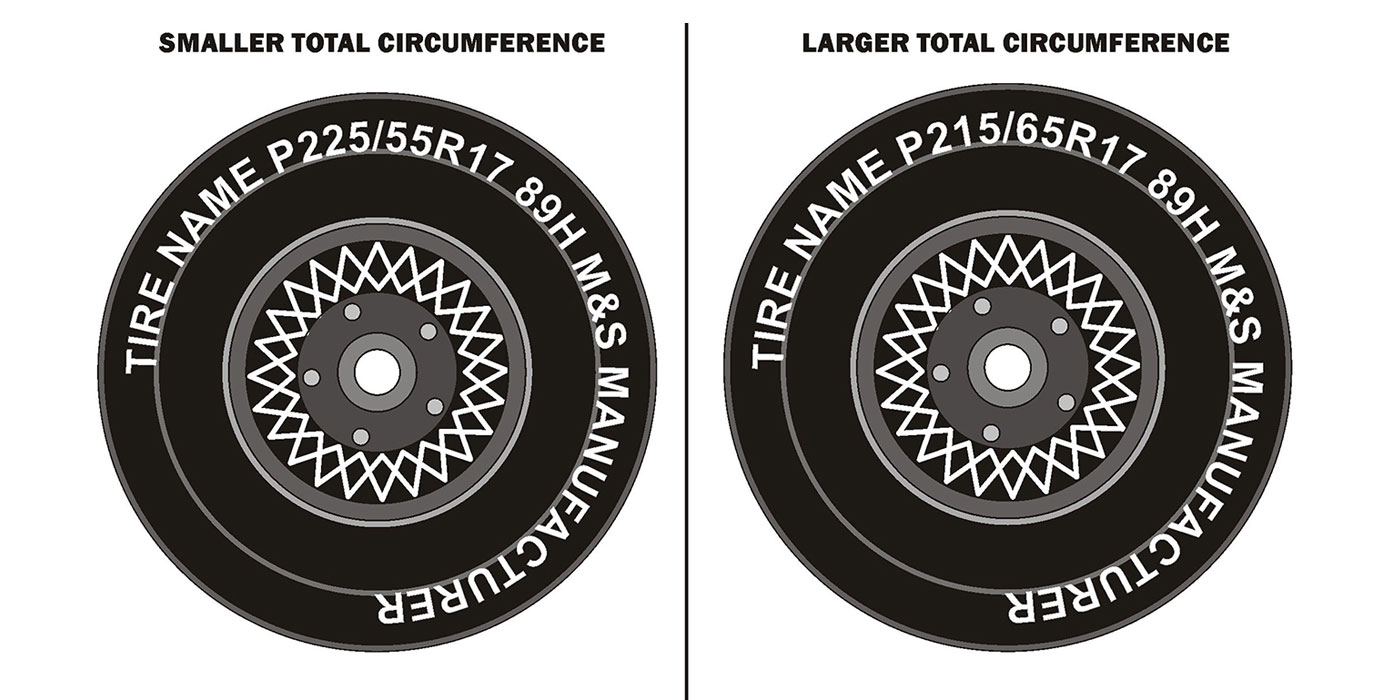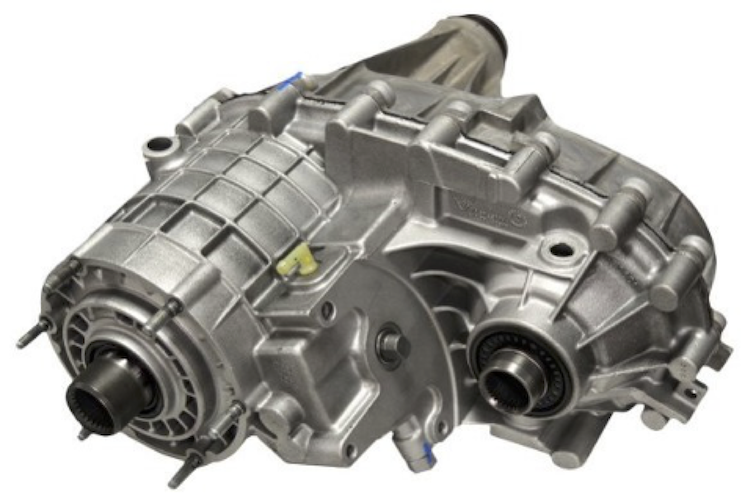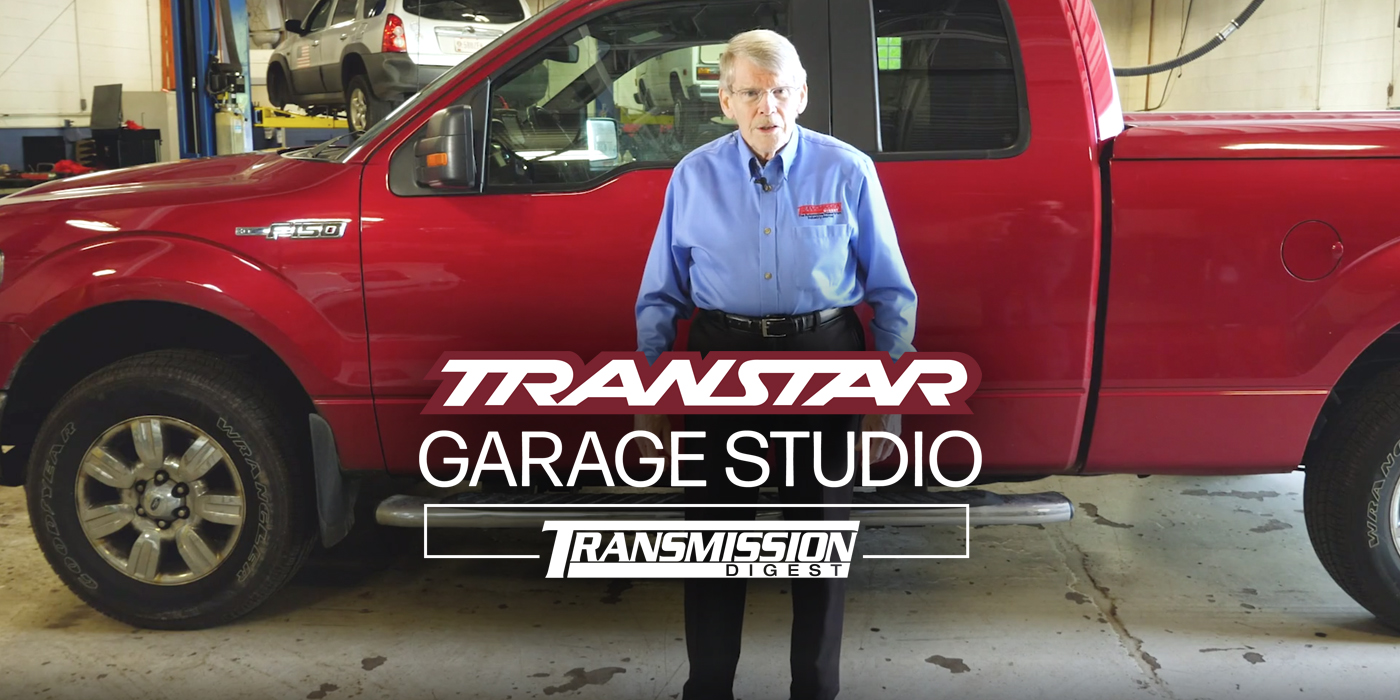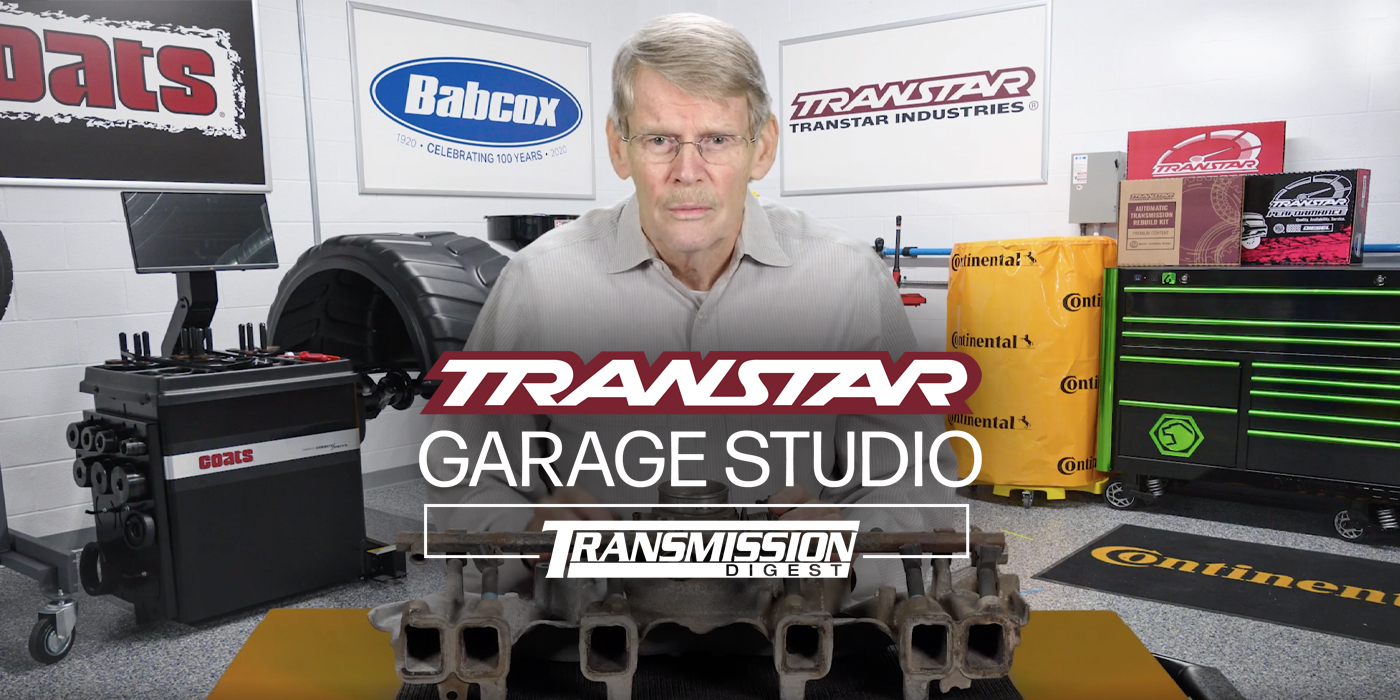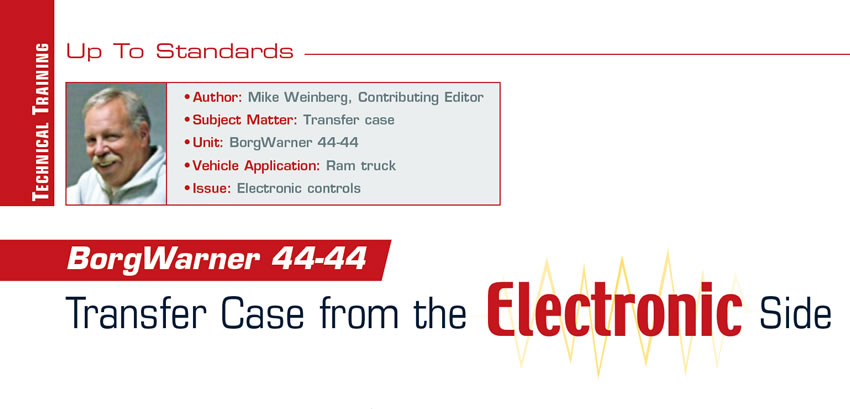
Up to Standards
Author: Mike Weinberg, Contributing Editor
Subject Matter: Transfer case
Unit: BorgWarner 44-44
Vehicle Application: Ram truck
Issue: Electronic controls
Last month we took a look at the BW 44-44 and 44-45 series of transfer cases found in late-model Ram pickups. We continue this month with a look at the electronics that make the 44-44 function. A brief review on this unit leads us to an electronically controlled active full-time transfer case.
There is a wet clutch pack inside the transfer case, and the encoder motor electronically shifts the unit between ranges and applies the wet clutch to transfer torque from the rear axle to the front when the wheel-speed sensors see a difference in wheel speed that the computer interprets as a slip.
The operating ranges are 2High, 4WD Auto, 4WD Lock, Neutral and 4WD Low. In 2 High, there is no activity in the transfer case and 100% of the available torque is transferred to the rear wheels. In 4WD Auto, the Drive Train Control Module measures relative wheel speeds and when there is a difference asks the internal magnetic clutch to lock up and transfer power to the front wheels until the wheel speeds equalize; the clutch then will relax, sending most of the power back to the rear wheels. This range can be used at all times on any kind of pavement, and there is no driver involvement.
4WD High enables the clutch pack to fully engage, locking the vehicle in a 50/50 torque split between rear and front axles. This range is suitable for use only off road or on snow- or ice-covered dry pavement, where there is some wheel slip available to stop driveline windup and crow hop. 4WD Low does exactly the same thing as 4WD High but adds a 2.64-1 gear reduction and likewise should be used only off road or on snow- or ice-covered pavement.

One of the major considerations in all “active” or computer-controlled transfer cases, transfer cases that use a viscous coupling to transfer torque, an internal-clutch-driven unit or transfer cases using a center differential to split torque is tire size. Frankly, I am tired of talking about it, but the amount of tech-line traffic says the message is still not fully understood.
All these units will activate a torque transfer to the front axle if the wheel speeds are not equal. The ultimate problem is mismatched tire sizes or worn tires, or tire pressures that are not even. One-quarter inch difference in tire circumference will cause the transfer of torque. The only positive result you can get is by measuring tire circumference. You can do this with a stagger gauge, which is a large caliper that will read circumference directly, or getting the wheels off the ground and running a tape measure around the center of each tire. Disregard the sidewall tire sizes, as they mean nothing to an accurate match of tire circumference; even though all the tires come from the same mold, they grow to different sizes when inflated. Ram with the 44-44 has added a new dimension to how vital tire sizes are in that it has programmed all correct factory-available tire sizes into the Totally Integrated Power Module (TIPM).
“The production Powertrain with the production sized tires is the only emissions certified configuration that is available for reprogramming,” according to the manufacturer. A non-production-sized tire cannot be programmed into the TIPM. The two most-critical measurements to be made for any diagnostic work are battery voltage and tire sizes. This is basic, and if these steps are not the first you do in doping out a problem, your day will get much longer.
The main electronic components involved are the TIPM, which is on the left front of the engine compartment; the encoder shift motor (attached to the transfer case); the instrument cluster; the transfer-case selector switch; the DTCM, which is behind the passenger-side kick panel; and the front-axle disconnect. Certain vehicles also have stability control, which will come into play with some issues. The computer-message traffic occurs through the CAN C bus. The TIPM must recognize the VIN and the programmed tire sizes or it will throw codes. Figure 1 is a list of trouble codes, and Figure 2 lists the factory-approved tire sizes that can be programmed into the TIPM. It is easy to see one of these vehicles coming into your shop with some codes after the customer has visited a tire warehouse and bought a new set of tires that are not in the TIPM configuration, or where the tire sizes were not programmed into the TIPM.
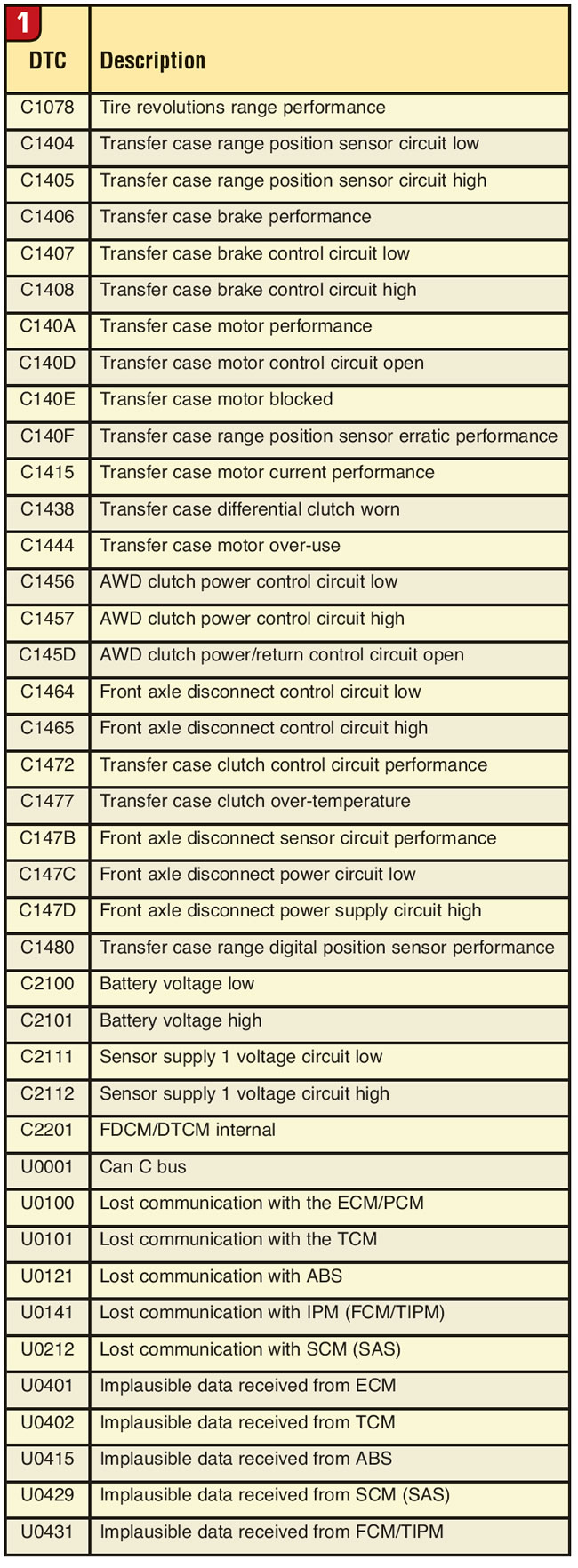
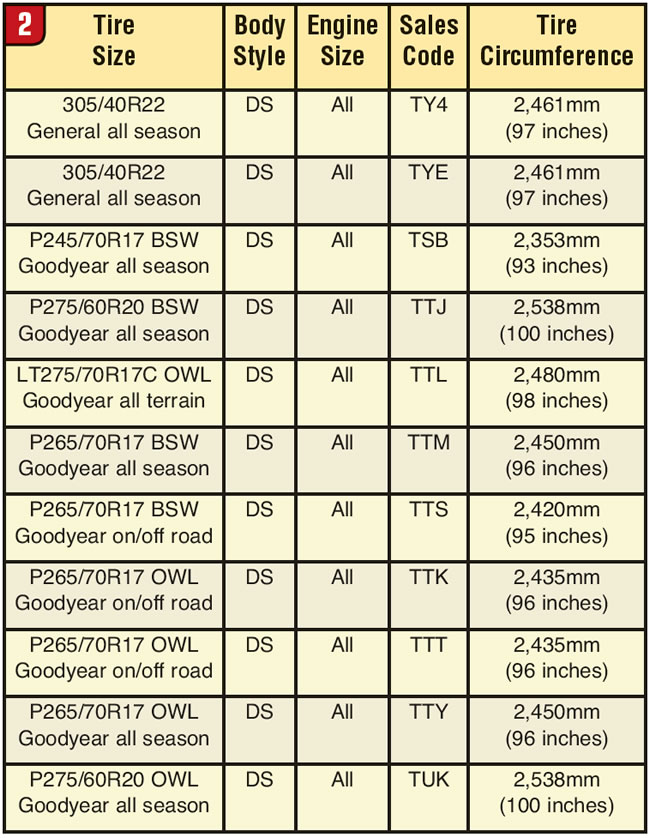
The encoder motor shifts the transfer case into the desired range and applies the internal clutch to achieve torque transfer to the front wheels. The encoder measures the position of the motor and relays that to the DTCM. There is no spring-loaded detent to hold the transfer case in a shifted position. This is done with an electronic brake inside the motor that is on after a shift is complete to maintain the motor position. When changing motors, or putting the motor back on, you must align it with the transfer-case shift rail. A nine-volt battery connected to the motor-brake power and ground terminals will release the motor brake to realign the shaft. Be particularly careful not to overturn the motor to avoid buying a new one.
These are not complicated units. The magnetic clutch apply has been with us since the BorgWarner 44-05. What has gotten more complex is the enhanced computer capability and the use of multiple vehicle software in the same computer that must recognize a specific VIN to get the right program to function. All the guys who wouldn’t invest in quality scanners, reprogramming equipment and continuing education are all out of business. Tattoo “tire size” on your arm, and you will be way ahead of the game.

Mike Weinberg is president of Rockland Standard Gear.










